Paris Tour to Visit Close Friends
--My French Teacher and I
January 19-22, 2024
◐
January 19-22, 2024
Three years of COVID-19 have cut off our contact with the outside world: we could not go abroad for meetings and studies, and even when my foreign teachers were seriously ill, I could not attend to them, resulting in the fact that my teachers Jean-Jacques Merland and Prof. Luc Picard were not able to see each other one last time before their deaths, which is ultimately regrettable!
In January of this year, which was also the first year of full liberalization after COVID-19, our country opened a 15-day visa-free policy to all six European countries, and we accepted the invitation of the ABC/WIN General Assembly in France to go to the Val d'Isire in the Alps for a meeting. On this trip to France, I must visit the graves of my teachers, Mehran, Houdart, Picard and Lasjaunias, to express my nostalgia and gratitude.
Prof. Jean-jacques Merland
Prof. Merland, my first mentor in France, was a soft-spoken man who never spoke aloud to anyone. He always smiled before he spoke and greeted everyone at work with a smile. It is said that when he was a child, he was introduced to a priest who taught him to speak in a low voice, which he memorized and kept for the rest of his life. Prof. Mehran was a student of Prof. Djindjian, the originator of interventional neuroradiology in the world, and one of the first 18 initiators of the WFITN. He and Prof. Djindjian co-authored the book "Superselective Angiography of the External Carotid Artery," which laid an important foundation for interventional neuroradiology. They also created super-selective spinal angiography, which made the Lariboisière Hospital the hospital with the largest number of spinal vascular malformations cases in the world at that time. Prof. Djindjian's large photograph of the solid perfusion of the Adamkiewicz artery of the spinal cord not only gave us the first glimpse of the morphology of the vessels so deep in the tissue of the spinal cord, but it was also a huge testimony to the cooperative co-creation of the extra-spiritual and the intra-spiritual and the intra-spiritual and the intra-spiritual and the intra-spiritual. This large picture of the penetration hangs in Prof. Houdart's office (more on that later).
It was for this reason that I was fortunate enough to be invited, as a neurosurgeon, by a chief of neurosurgery to come to France to study interventional neuroradiology.


For one year and four months of study, Prof. Mehran gave me tremendous help and trust:
Gave me a master key.
For me to be able to look at all the X-rays at any time. He gave me a master key that opened all the rooms in the department. This is the only privilege given to me among all the foreign trainees! What a great trust that was! This allowed me to read a large number of thousands of films during my studies, especially spinal vascular malformations, of which I saw more than 3,000, and to gain an in-depth knowledge of spinal vascular malformations, the disease on which I wrote my thesis.
Tutoring me to write my thesis
I was a student of the Workers' and Peasants' Army and had never written a thesis. In France, my title was "Assistant etranger" (foreign assistant at the Paris Hospital), and I would be issued a diploma. The Chinese Embassy in China is said to recognize it as equivalent to a post-doctorate. Prof. Mehran gave me the title "Spinal cord lesions caused by venous hypertension in the spinal cord". This was a very new topic, and it was also a problem that Prof. Mehran had discovered and thought about on the basis of a large number of cases. At that time, Prof. Mehran was preparing for his vacation, and he gave me six cases to analyze. I reviewed the relevant literature and spent 20 days writing a paper in French, which I submitted to Prof. Mehran's desk when he returned from his vacation. When he saw the thesis, he asked me in surprise, "Ling, you finished the thesis in 20 days, don't you sleep?" In fact, my thesis and French were really not good, but Prof. Mehran took great pains to help me revise it word by word, and the revised thesis had a new look! Holding my first paper and looking at the certificate signed by JJ, I was so excited! This is really a teacher with their own heart and soul to mold students ah!
Care and attention in life
He often invited me to his home as a guest, and even stayed at his country house for weekends. In the winter of 1983, he even took me on a skiing vacation with his family to the Alps. This was a great comfort to me as a young woman doctor, alone and far away from home and homesick.
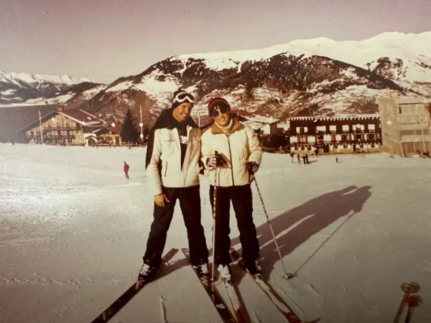

Prof. Mehran and his wife, Marie-France, were an exceptionally kind and devout Catholic couple who could not have children but adopted six orphans from different countries, the youngest of whom, Francois, was a little boy born with an underdeveloped brain and blind in both eyes. They spent a great deal of financial and material resources to save the poor boy, even writing to the then Pope to ask for a necklace of blessings for Francois. The other members of the family opposed their adoption of the child. But when François could not live and the family gathered around him to pray for him on his deathbed. Love flowed through every heart! Marie-France told me afterward that this was the reason they wanted to adopt François: to keep love in every heart! I was shocked. What an intensity of heart and kindness to sow the energy of love with such financial resources and energy!
They did this with their loved ones as well as with their patients. He always said, "Listen to them, understand them, treat your patients as if they were your family, and you won't have any problems". I think that's what Mr. and Mrs. Mehran taught me, and that's what led me to sponsor 1,300 orphans over the course of 20 years. I developed a strong bond with all of the family. Marie-France, a high school English teacher, was extremely kind and warm, and helped all of Prof. Mehron's students a great deal. I was often invited to their home, knew each of their children by name and condition, and kept in touch.
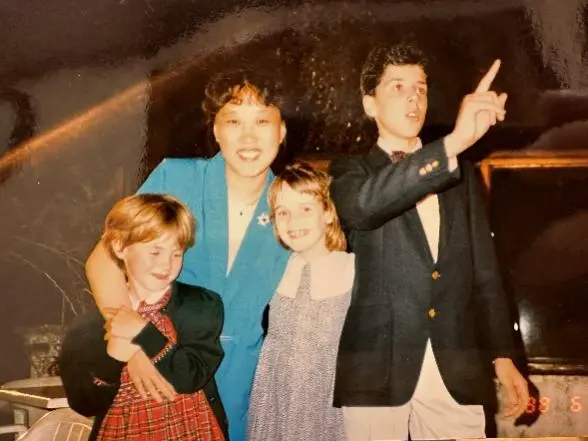

Parting Words
On July 4, 1983, I passed my exams at the School of Microsurgery of the University of Paris VI, and I couldn't wait to book my ticket back to my home country on the 7th, with a strong desire to return! Before my departure, I made dumplings all night and brought 4 carts of dumplings to the department for a farewell banquet, inviting all the colleagues to taste Chinese food. On that day, the whole department stopped working for half a day and set up 3 stoves to cook the dumplings, and the whole department was full of joy. Prof. Mehran said fondly, "Ling is going back to China. She told me that a great Chinese soldier named Lei Feng once said that a person lives to make life better for others. Ling is that person, and she's bringing us all back to China." It was the first time someone had ever made such a comment about me, and it was actually a foreigner! But it made me take a particularly hard look at myself: yes, I am going to follow this path!
When I left Paris, I not only brought back four large boxes of books and a variety of catheters, syringes, and contrast media (which I had bought with my own savings and unpacked unused), but more importantly, I brought back with me Prof. Mehran's expectations of me and the influence of his noble qualities on me. Keeping in mind his teaching that "you must teach them everything you have learned", I have been organizing various courses and societies since my return to China, to the point of organizing the 9th World Congress of Interventional Neuroradiology in Beijing. In my interventional center, all materials are openly allowed to be copied for trainee records. Our center has trained more than 1,000 doctors in more than 30 years. Dear Prof. Mehran, I have not lived up to your expectations!
On this trip to France, as soon as I got off the plane, I sprained my left knee and could not touch the ground with my foot, so I had to push everything with a wheelchair. I contacted Marie-France in advance, she told me, because of Professor Mehran mobility and wheelchair can not go up the stairs, she sold the house in the city of Paris and has now moved to the countryside more than 80 kilometers from Paris (Pressagny, Normandy) villa to live. Prof. Mehran was also buried in the cemetery in the village of Pressagny after his death. I came down from the mountains and headed straight for Normandy.
Thanks to the navigation, we had no trouble finding Mary Frances' house, which I had once known and lived in.
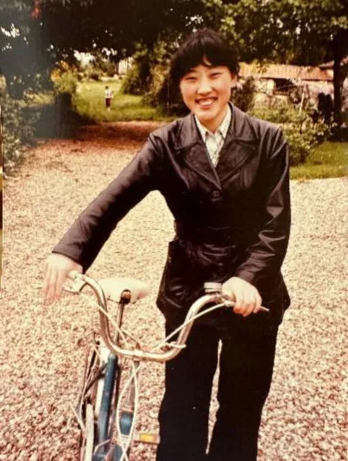
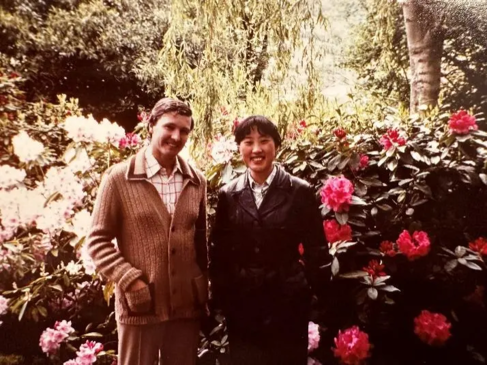
It had snowed heavily in Normandy two days ago and the temperature had plummeted. The roads were covered with snow. The yard was as big as ever, but there were far fewer trees and flowers, and how the house seemed so small!

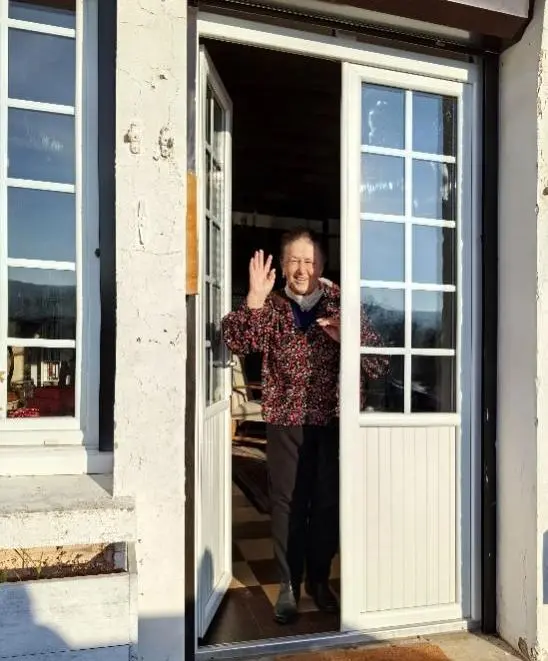
The door opened softly and Marie-France stood in the doorway to greet us with a smile. I threw off my wheelchair and limped up to Marie-France and hugged her, and we both burst into tears! I held Marie-France's hands so tightly, they were so cold. The room wasn't very warm. I hurriedly opened the cashmere scarf I had brought and put it on Marie-France. She said, "It's so warm!" I was heartbroken for a moment. We exchanged greetings and gifts together. To my surprise, what Marie-France gave me was a certificate of honorary membership that Professor Mehran had received at the European Society of Neuroradiology! This is a great honor that can only be received by those who have made exceptional contributions to neuroradiology. It is a recognition and acknowledgement of Prof. Mehran, and Marie-France gave it to me in order to encourage me to make a greater contribution, which is a good intention! What I gave to Marie-France is a photo of Prof. Merland and Marie-France at the 9th World Congress of Interventional Neuroradiology in 2007, when they came to Beijing for a meeting. We took a photo together at the Summer Palace, which records the deep friendship between us and my endless nostalgia for my teacher!
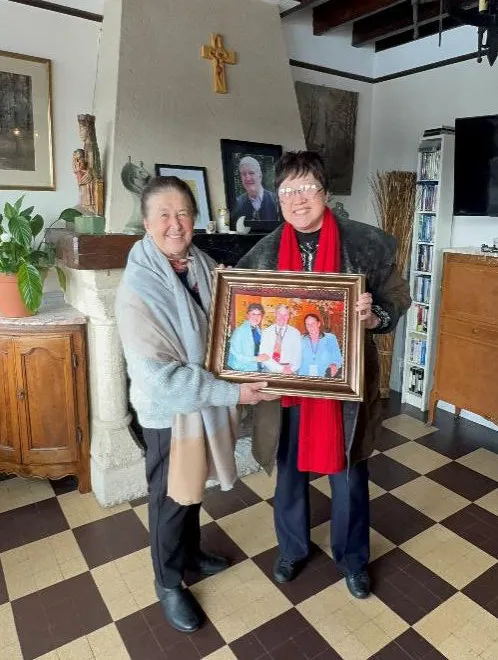
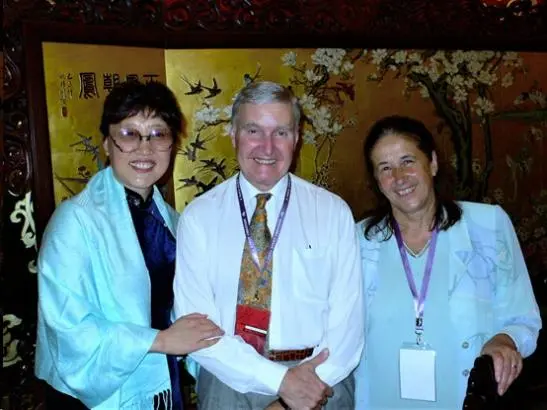
A photo taken with Mrs. Merland
After a short exchange of pleasantries, we then walked to the village cemetery, only 50 meters from our home, to pay our respects to Prof. Merland. Under the cover of snow, the cemetery looked even more solemn and dignified. Most of the modest cemetery is owned by families, and Prof. Mehran's grave was arranged long ago. On the reddish-brown marble stands a large tombstone with the sign of the cross and Prof. Mehran's epitaph: Dieu dit, "mon nom est Je suis et Je suis L'Amour." Vivre est L 'amour. (A life full of love in the name of God.) Next to it is a statue of the Virgin Mary. Prof. Merland's date of birth and death is written on a small tablet next to it: "Jean-Jacques Merland, a life full of passion. Born February 9, 1942, died May 17, 2023." Tiny François is buried in their family cemetery, and to the left of the headstone, there is a small monument that reads, "François Mehran, born November 19, 1984, died August 11, 1985. All in the name of God." The poor little boy could finally be laid to rest in the Mehran family cemetery, which is a true reflection of Prof. Mehran's "life of love".
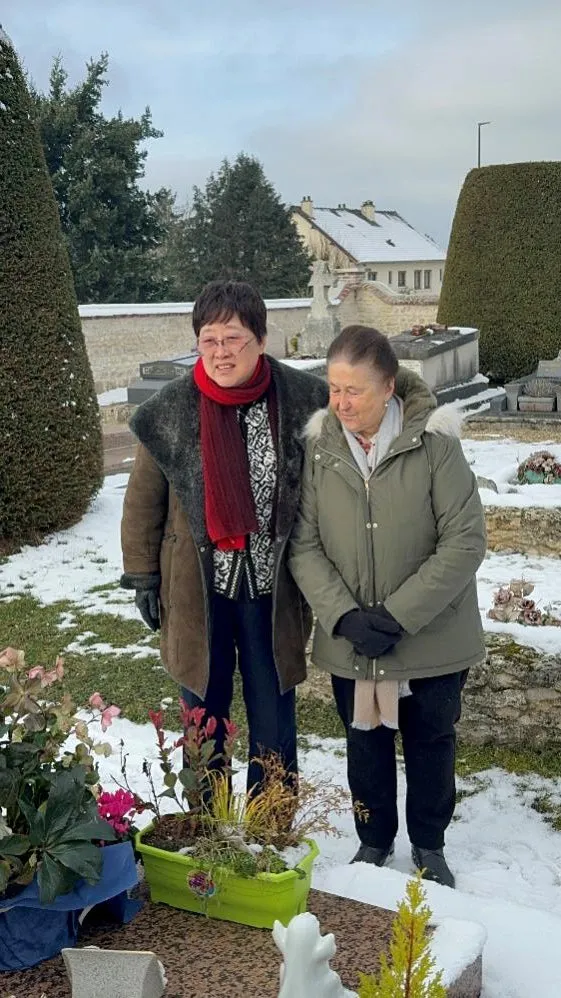
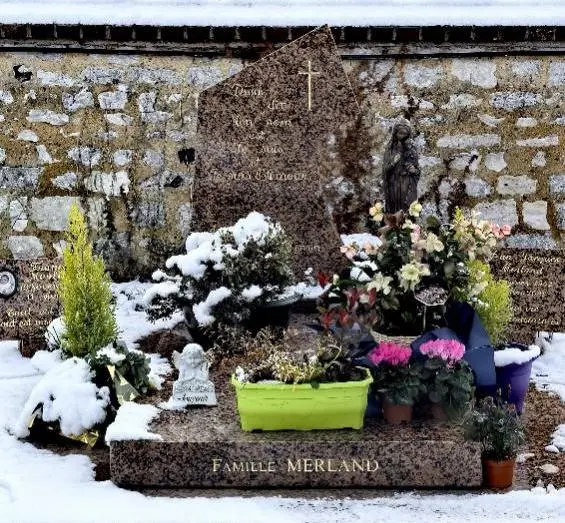
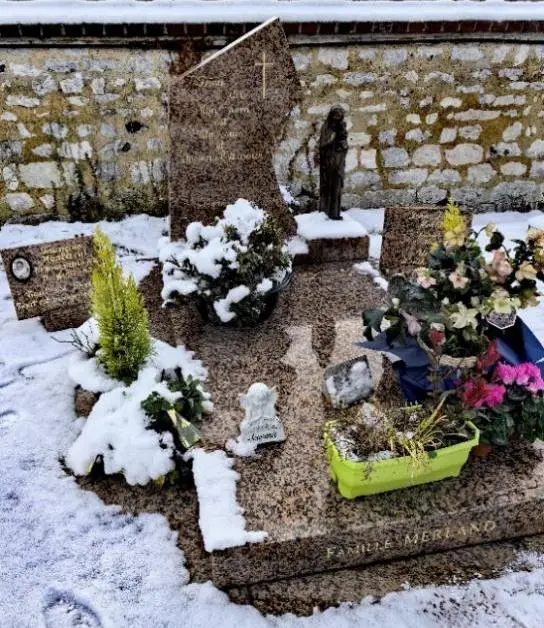
I offered flowers, poured out my thoughts to Prof. Mehran, and bowed three times deeply. I learned that during the COVID-19 period, Prof. Mehran went back to live in the country and it was his daughter Marie-Laus who had been taking care of him. He died in a local hospital on May 23, 2023, after contracting COVID-19 during his stay. Prof. Mehran fell while skiing in January 1997 and his snowboard hit his neck, causing a traumatic entrapment of the carotid artery, resulting in hemiplegia on the left side, which was later treated with anticoagulation, leaving only an infarcted focus on the thalamus, and although the hemiplegia of the limb was restored, he was left with damned thalamus pain, and a prolonged period of time on a wide range of painkillers to the extent that he would often be out of control of his movements. The last time I went to see him before the COVID-19, he was hunched over and could no longer stand straight, it was really heartbreaking to watch!
Prof. Mehran lived his life for love: love for his family, love for his children, love for his friends, love for his patients, love for his students ...... love for all the people and things worth loving!
Academically, he was passionate and exploratory.
In 1973, he followed Prof. Jin Jiang to do super-selective internal and external carotid artery angiography, which opened the door to the development of interventional neuroradiology. Serbinenko in the Soviet Union was the first to use balloon in 1970, and in 1972 he had treated 100 cases of CCF with balloon embolization of CCF. In 1975, he has treated 500 cases of AVM in brain and other parts of the brain and published a lot of articles. After Prof. Jin Jiang, he is one of the pioneers of interventional neuroradiology. Prof. Mehran was awarded the title of Officer of the Legion of Honor of the French Republic in 1992, and in 2008 he received the Knight's Badge of the Legion of Honor of the French Republic. This is the highest honor in France and he deserves it!
Prof. Luc Picard
I knew Prof. Luc Picard of Nancy from my studies in Paris and knew that he was particularly famous for his work on embolization of cerebral arteriovenous malformations. However, due to financial constraints and time constraints at that time, I did not have the time to visit him. However, if there is a fate, there is a chance! After I returned to China in 1985, the hospital bought a Philips angiography machine, and a group of three of us were ordered to go to Holland to receive training. The World Congress of Neuroradiology was held in Amsterdam that year, and Dr. Zeng, a Chinese doctor in the hospital where we were studying, arranged a meal and invited Luc and Jacques Moret and me to have dinner together. During the meal I finally met Prof. Picard, whom I had long admired, and his good friend and partner, Prof. Moret. Luc told me that he had visited China in 1976 during the Cultural Revolution and was very interested in China and wanted to visit again. Prof. Mohai, on the other hand, had heard his grandfather talk about China since he was a child, and had a longing for China: his lifelong dream was to go there. At that time, the French had a customary saying: "Ce la Chine" if something was unbelievable! China is a dream world for the French - a very distant and mysterious country. We had a great conversation over the meal, and I was also instructed by the then President's dad before I left the country that we could invite foreign experts who wished to visit China to come to China for exchanges, and that we needed so much to open our doors and communicate with the outside world at that time. With such an imperial sword, I immediately agreed to their request and visited China in October of the following year.
In October 1986, after Prof. Mehran visited to China in July to hold the first interventional neuroradiology course in China, Luc and Mohai, as well as Luc's mentor, Prof. Lepoire, Director of Neurosurgery, and their wives, Francoise, Martine and Marieclarie, came to China to hold the second national interventional neuroradiology course and organized the 2nd National Interventional Neuroradiology Course. At that time, Drs. Ma Lianting, Li Tielin, Tang Wenyuan, and Chen Mingzhen attended the course, and I was the French interpreter for the whole course.


During the course, several patients' surgical demonstrations were done. The one I remember most clearly was a 1-year-old child named LiChēn, who suffered from an aneurysmal malformation of the large cerebral vein and hydrocephalus. Luc and Mo Hai worked very well together, and in the absence of Magic catheters at that time, a microcatheter with a perforated balloon fitted with a water hose was able to deliver the catheter into place and close the blood supply of the posterior choroidal artery with pure glue. The process of injecting and removing the catheter was described as "a breath of fresh air and a thrill!" The patient was cured once and for all! He is now almost 40 years old. This was the first time that we had seen such a high-flow vascular malformation being embolized with glue, and it was a real eye-opener for Chinese doctors.
This visit to China, we also went to Xi'an, Chongqing, Wuhan, not only visited and lectured at the Four Military Universities, Three Military Universities, Wuhan Military Region General Hospital, but also visited the Terracotta Warriors and Horses, took a Yangtze River Cruise on the Three Gorges of the Yangtze River, from Chongqing all the way to Wuhan. From then on, China's long culture, the hospitality of the people, the scenery of the strange and beautiful, have left a deep impression on Luc, Luc and I and his wife Francoise also became very good friends.
Luc was a socialist from a middle-class family who was persecuted by the Nazis and exiled during World War II. Therefore, he and my father shared a common language when we talked about the war of Resistance against Japan.
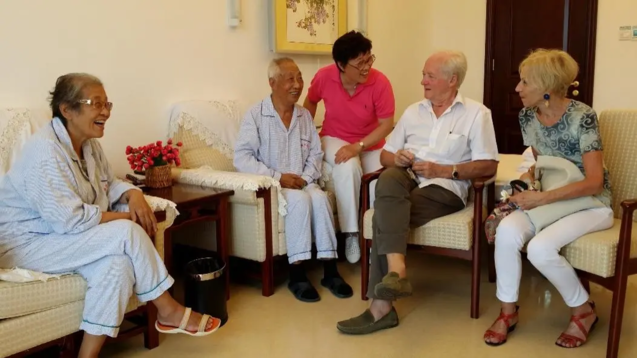

Luc and Françoise were born in the same year, and their mutual respect and love for each other was exemplary! Luc was very funny and often made fun of Françoise. Once we went to the antique city, talking about how to identify the authenticity of the silver dollar, Jianjun said it is pinch the middle of the silver dollar blowing a breath, put it in the ear to listen to the vibration of the sound is true. Luc immediately hugged Françoise, blew a breath to her, put it to his ear to listen, and said repeatedly, "Well, it's real! It's true!" It made us laugh!
Françoise is a counselor who has a very high appreciation of art and logical thinking and talks about things philosophically. Unfortunately, my French was not good enough to understand what she was talking about, and this became my regret in the end.
Because of Luc's love for China, his profound academic attainments and the friendship between our two families, I invited Luc and Françoise to China almost every year. In 1994, with his support, we in China were the first to initiate the establishment of the Asian-Australian Federation of Interventional Neuroradiology and Therapy (AAFITN); and we also organized the WFITN World Congress in China for the first time, which was held in China, and the opening ceremony held on the Great Wall at the time was extremely impressive. Luc was of course the star of the show.
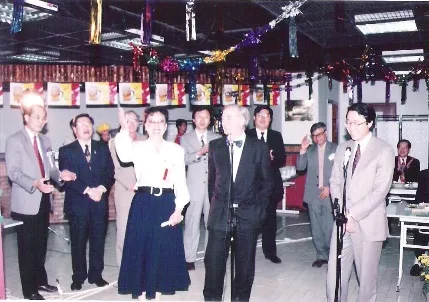
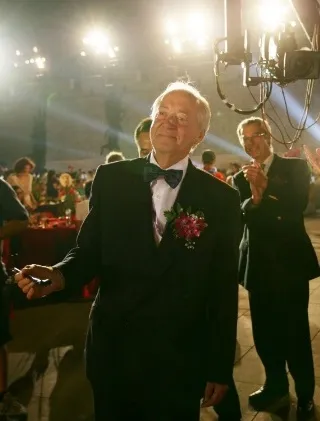

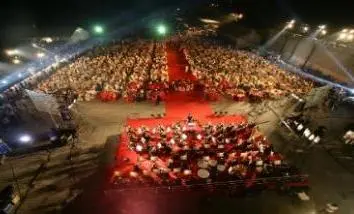
He came to China Cerebrovascular Disease Forum every year, and each of his presentations was visionary, full of humanism and medical ethics, and enlightened us on the direction of future development.
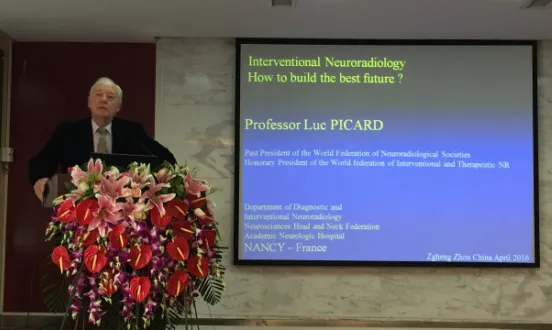
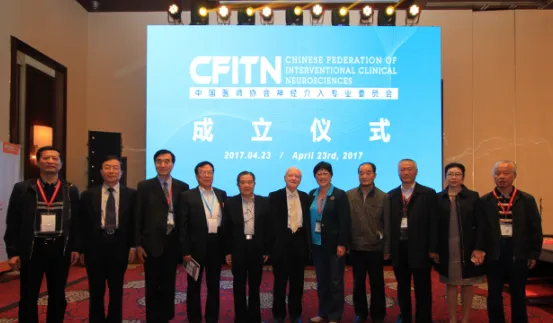
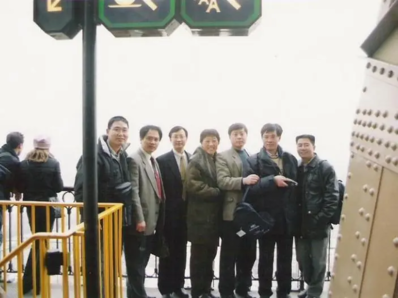
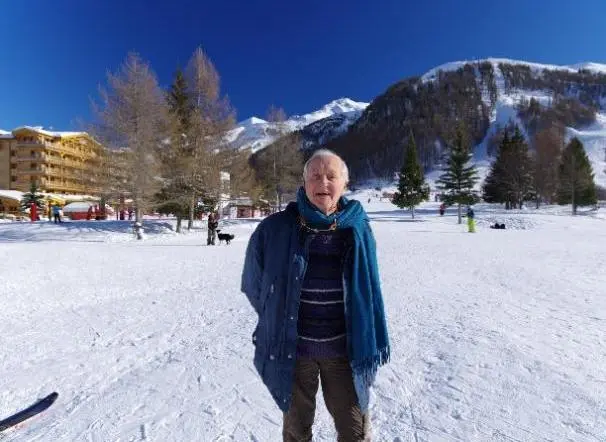
He also invited me to the ABC/WIN confrence in the Alps every year. Over the past ten years, I have also organized many Chinese interventional neuroradiologists to go to conferences, and Luc has reduced the registration fee for them.
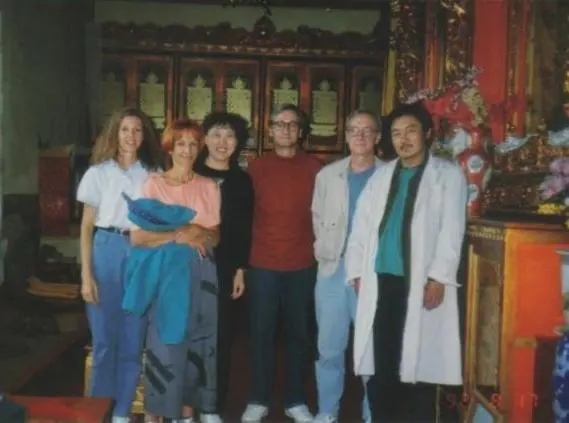
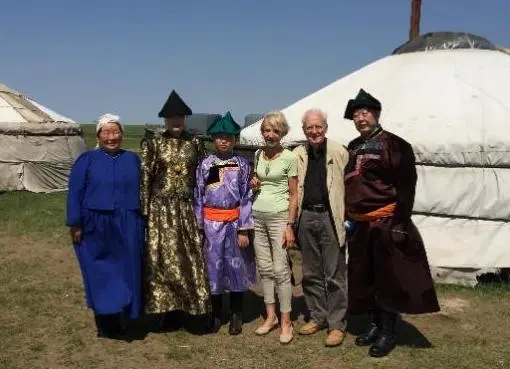
They came to China more than 20 times and traveled to almost all provinces and major ethnic minority areas: Tibet, Xinjiang, Inner Mongolia, Yunnan, Guizhou, Hunan, Hainan, Henan, Shandong, Shanxi, Shaanxi, Northeast ...... He received many Chinese doctors in his department: Ma Lianting, Li Tielin, Wang Daming, Yin Long, Xiao Shaowen, Jiao Dejean all studied there. Nowadays, all of them have become big names in the Chinese interventional neuroradiology field. The State Administration of Foreign Experts Affairs of the People's Republic of China honored him with the "Highest Friendship Award" and invited the couple to attend the 70th anniversary ceremony of the National Day.
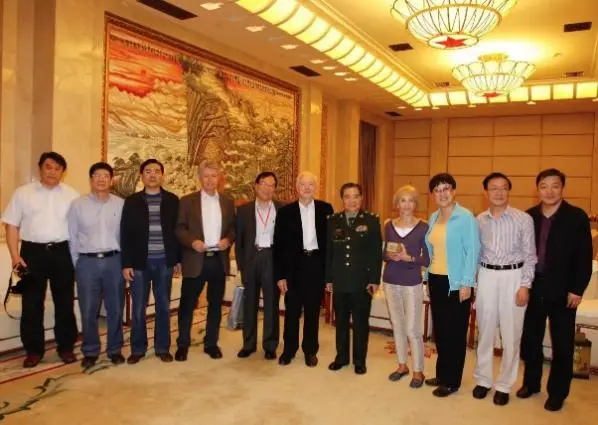
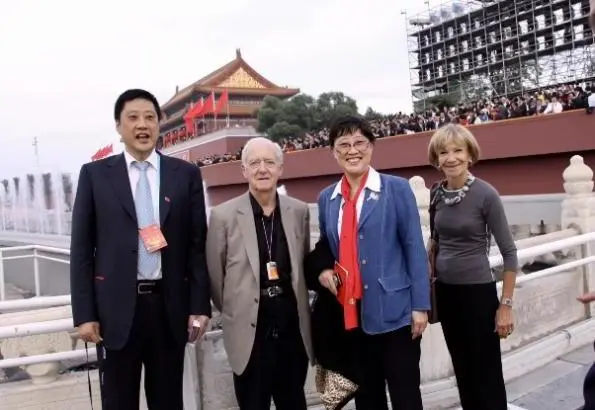

On the 10th anniversary of the founding of Luc's new neuroscience building, I presented him with a huge double-sided embroidery on behalf of Chinese doctors: "Fortune and Glory". Today, things have changed. The piece of double-sided embroidery still sits in the hallway, but the owner has sailed away!
I knew the Luc family very well, for 38 years, we talked about everything, academic, political, philosophical, cultural, historical, family, etc. In the international field of interventional neuroradiology, he was modest, wise, sensitive, tireless, but never aggressive, always persuasive, patiently convincing the bigwigs in his not-so-standard English. Every year, he organized a pre-conference in Val d'Isere to discuss the direction of interventional neuroradiology worldwide. For example: training guidelines for interventional neuroradiology, relations with commercial manufacturers and how to fight against corruption, medical ethics and moral standards in interventional neuroradiology, etc., which have been discussed repeatedly for more than a decade. He was good at uniting doctors at all levels in all countries, never taking credit for his work, never showing off his skills and accomplishments, and especially respecting the younger and more recent generations. Even in arguments over errors, he always let everyone have their full say. He did not have an illustrious book or shiny medals, but he was recognized as a spiritual leader in the hearts of all physicians in the world of interventional neuroradiology. The successive ABC/WIN meetings held in Val d'Isere for more than 40 years have been a monument to him, laying the foundations of interventional neuroradiology in a spirit of democracy, discussion, respect, and innovation!
In 2019 I mimicked ABC/WIN to do a China-WIN in Hainan Province as well, and once again invited Mr. and Mrs. Luc to visit China for this meeting to set the tone for us. Before the trip Francoise suddenly developed a high fever and had to cancel the trip. She suffered from an immune blood disease and had to undergo continuous chemotherapy. When we went back to Val d'Isere in 2020, Luc was especially apologetic about not being able to make the date. I kept reassuring him that it was okay and we'd schedule it for next year. Who knew that the ravages of the COVID-19 would bring the world's operations to a halt? Luc's original prostate cancer suddenly worsened and metastasized throughout his body, and he died on April 15, 2021 in his hospital in Nancy, France. Françoise, despite her own frail health, remained by her side throughout the day. Less than a year after Luc's death, Françoise followed him. The two of them were truly a loving couple, never apart, and they ended up together.
On January 19, 2024, I came back to Paris from Val d'Isere and took the train directly to Nancy. Luc's son, Hubert, took us to the grave of Luc and Françoise. It is on a hillside on the edge of the city of Nancy, not far from Luc's home. The cemetery is small, and the ashes are made in such a way as to form a memorial wall, which is very simple.
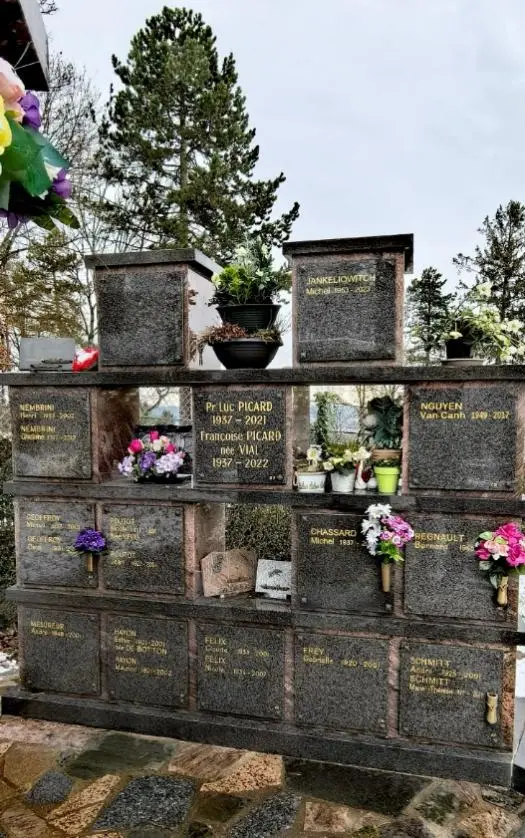
It was so simple that there was no place to put flowers, but fortunately there was a space at the top, so I placed the flowers I had brought with me, touched the names of Luc and Françoise with both hands, and cried out in anguish! I know that life has to end one day and make all sorts of assumptions for that day, including for Mr. and Mrs. Luc. I imagined that I would fly over and be by their side during their illness. I also imagined that in case they got sick during their visit, I would send them to the best hospital for treatment. But I never imagined that COVID-19 would isolate us for three years so that I could not go out! This was the only way I could express my condolences! The day after Luc's death, which coincided with the 16th China Cerebrovascular Disease Forum, I made a PowerPoint presentation "Dear Luc, I want to tell you" and spoke at the conference. I choked up several times during the speech and couldn't go on! I am saddened by the loss of an elder who was like a father, a brother, a teacher and a friend, a foreign friend to whom I could always confide in, a world giant who selflessly and unconditionally supported the cause of neuro-intervention in China academically, a learning opportunity to see each other every year, an object to whom I could show off China's development and progress, and a friend to whom I could let him continuously enjoy the dividends of China's reform and progress! Whenever I met him, he would exclaim and appreciate with special sincerity, how satisfied I must be!
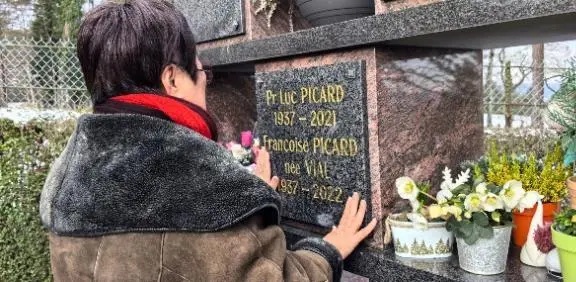
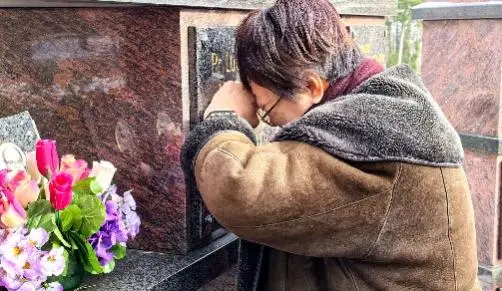
But all this will never come back! All I can do is to face the cold marble tombstones and touch their names to shed tears. Luc, Françoise, I've come to see you! I'll come back to visit you again. According to our Chinese custom, every Ching Ming, I will offer you a bouquet of flowers and light a stick of incense, hoping that you will still be together in heaven and live without illness or worry!
At Hubert's invitation, we went back to Luc's home, a place where we had been guests many times before.

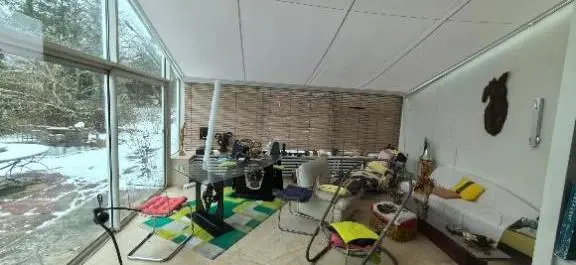
There were many souvenirs in the house that I accompanied the two of them to find in antique stores or old markets. They were especially fond of old Chinese furniture and wood carvings. This small red Chinese medicine cabinet was bought by Françoise. There was also an old carved wooden bed frame that Françoise loved so much that she bought it and went through a lot of trouble. I got it to the airport in an ambulance, and then they rented a big car to take it back to Nancy. When she got it back she fitted it with a glass top and legs, making a very nice coffee table.

Today, the house has been given to their eldest daughter who is ready to sell, and only part of the items will be kept as a souvenir. Things remain as ever, yet there are here no more. The house reminds of them, woo-hoo!
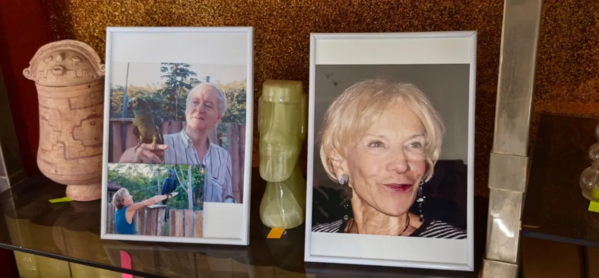
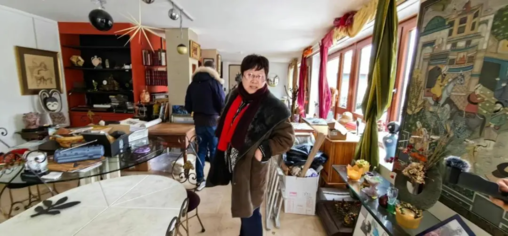
I reluctantly took one step and turned back three times, keeping everything here in my mind. History will also remember that here once lived a pair of old people who were in love with each other, a French scientist who had a deep love for Chinese culture, history and people, and a professor who made great contributions to Sino-French medical exchanges!
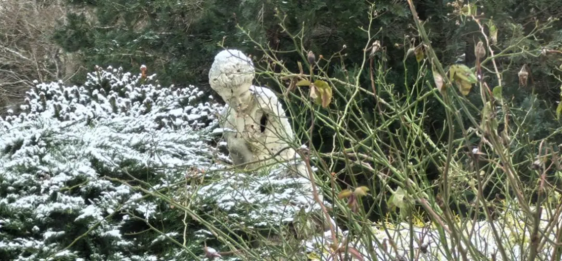
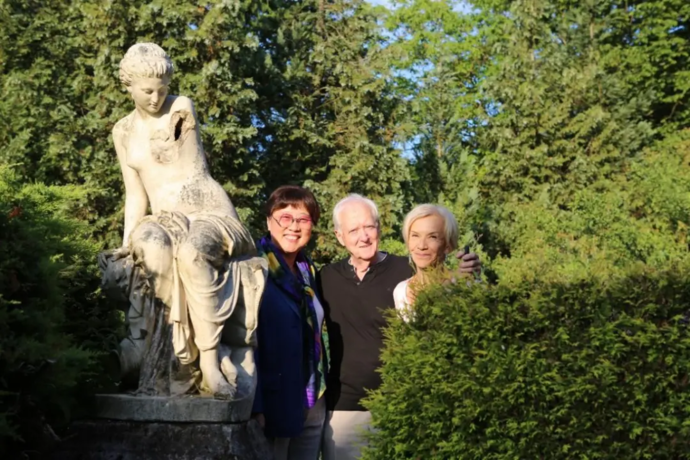
The statue of the goddess with a broken arm is still standing there in the courtyard, without the company of her loving master, adding a lot of withered grass, which looks more withered under the cover of snow. I think back to a few years ago when I went to Nancy for a meeting, I took a picture with Mr. and Mrs. Luc in front of the statue in his yard, and we were all bathed in sunshine, each with a smile on his face. Today, it's not the same as it used to be! How can anyone accept that our former friends are now separated from each other!
With infinite melancholy and sadness, we went back to Luc's hospital, his Neurological Center, a building that used to make him very proud. I think he led me up and down the stairs to see his center as if it were his own. He wanted to build not just a neuroradiology department, but a neurology platform. Here, neurological medicine, surgery, radiology, and intervention all worked in one building, with no separation between specialties to support each other, consult, and unify treatment. Now, the latter waves are catching up with the former, and with a new director presiding over the center tent, the work is sure to put Luc at ease!
Finally, our group went to the old palace and took a picture with Mr. and Mrs. Hubert. Goodbye! Nancy! Goodbye, Luc and Françoise! I will come to see you again!
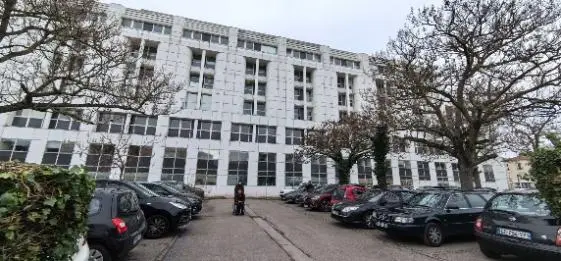
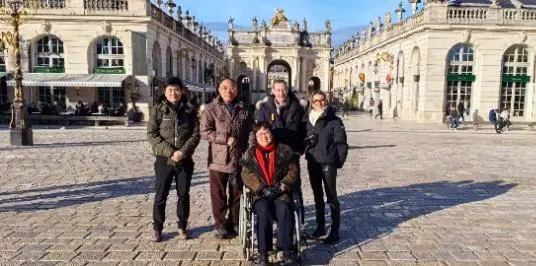
Prof. Rammond Houdart.
Prof. Houdart was my first mentor. Without him, I would not have known what interventional neuroradiology was, nor would I have had any chance to come to France to study!
In 1980, Mr. Deng Xiaoping became the Honorary President of the "Sino-French Medical Day" project. The project was funded by Air France and aimed at sending a group of French or Chinese medical experts to visit each other for 15 days each year, which was organized and received by the Chinese Medical Association. Among the French experts who visited China for the first time was Prof. Houdart of neurosurgery, dean of the Faculty of Medicine of the University of Paris VII, France. According to the arrangement of the Chinese Medical Association, Prof. Wang Zhongzhong was supposed to organize the lectures and reception. But at that time, Prof. Wang was sick with back pain and was on bed rest. He temporarily entrusted Prof. Duan Guosheng of 301 Hospital to organize and arrange lectures and room visits.
At that time, China had just opened the door of reform and opening up, and foreigners were seldom seen in China. If there were a few foreigners on the street, there would be a lot of onlookers. If there were a few foreigners on the street, there would be a lot of spectators. 301 Hospital welcomed a foreign professor of neurosurgery for the first time, and naturally attached great importance to it.
I remember that day in the east building of 301 Hospital, the staircase classroom was full of neurosurgeons from all the hospitals in Beijing. Professor Houdart, not atll, yet hale and hearty, gave a lecture on spinal vascular malformations in French, with Professor Zhang Tianxi from Shanghai Ruijin Hospital as the French interpreter. After the lecture, Prof. Houdart asked everyone to ask questions. At that time, Chinese doctors were not accustomed to asking questions at meetings, and the classroom was silent. Prof. Duan Guosheng thought that no one asking questions would make it look like the level of Chinese doctors was too low, so he quietly handed me a note and asked me to ask questions. It was this note that changed my life.
I can't remember what the question on the note was, but I just stood up and asked the question, and Prof. Houdart answered it with great interest and recognized me as the doctor who asked the question during the next day's checkup!
Divine favor is sometimes in that moment!
The next day's rounds coincided with my patient, a young man with an arteriovenous malformation of the spinal cord. Prof. Houdart asked me what method was used to confirm the diagnosis. I had just looked up the literature on spinal angiography, and was holding a catheter that Prof. Liu Chengji had given me, which I had used many times. The professor asked me how to do an angiogram. I explained to him by holding this curved and twisted catheter in my hand. He immediately said, "This catheter doesn't work anymore, I'll send you some catheters when I get back.”
On the third day, neurosurgeons from all over Beijing came to 301 Hospital to have a talk with Prof. Houdart and asked questions about his lecture "Spinal Vascular Malformation". He patiently answered all the questions, and finally announced to all of them that in order to figure out what is going on in spinal vascular malformations and how to treat them, they must learn spinal angiography, and he wanted to invite me to go to his hospital in Paris, France, to study interventional neuroradiology at the Lariboisiere Hospital!
Interventional neuroradiology? At that time we had never heard the word INTERVENTIONAL NEURORADIOLOGY! What is it? What can it do? What equipment is needed? How long does it take to learn? All of these were unknown to me. But at that time, when knowledge was scarce, it was a great thing to go abroad to study! I couldn't wait for the day I could go abroad.
In February 1982, after countless procedures and applications, I finally stepped on a plane to France.
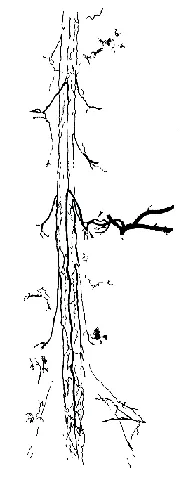
The place of study was the Neuroradiology Department of the Hospital de La Riboiselle, where Prof. Rene Djindjian, the father of interventional neuroradiology in Europe, worked. Unfortunately, Prof. Djindjian had passed away by then and his student, Prof. Mehran, took over his mantle and was in charge of the neurointerventional and diagnostic work in the entire hospital. Prof. Houdart was the head of neurosurgery at the hospital and a close friend of Prof. Kanekiang. There was a huge picture of spinal vascular perfusion in his office, which showed how interested he was in spinal vascular malformations!
When I first arrived in Paris, I had no idea where I was going. The little French I had learned before going abroad was lost in Java! I knew how to ask for directions, but I couldn't understand the answers! I had to go through procedures everywhere: registration at the Ministry of Health, registration at the Foreign Students Office of the Ministry of Foreign Affairs, registration at the French language school, health insurance, medical checkups at the hospital, procedures at the bank, residency at the police station, procedures at the foreign students' dormitory, and checking in at the hospital (department, cafeteria, and residency organization), etc. We are used to listening to the organization at home and doing everything by the organization, so we don't have to do it by ourselves! You have to make an appointment for everything here, and it's a big headache when you call to make an appointment! Just when you say a word, the person on the other end will say a lot of things that they don't understand, and then they hang up! Thanks to Prof. Tien-Shih Chang, he would take me to each and every one of them.
The most painful part was the accommodation. I moved 5 times in the first 3 months after I arrived in Paris:
The first time: I stayed in our embassy's guest house, No. 148, which was full of Chinese people and Chinese food, but it was far away and expensive. After staying for a few days and completing various formalities, I could live in the international student dormitory.
The second time: I moved from No. 148 to the international student dormitory inPorte de Clignancourt. When I came out from China, I specially brought Professor Houdart a one-meter-high white peacock made of feathers. The professor especially liked it. He invited me and Prof. Zhang Tianxi to his home on the Île de la Cite in Paris. This is a classical house located on the Seine River, on the dock of Baikouen, with a high and bright living room, which really looks like the palace of the aristocrats in the past. When we first arrived the scholarship was 2,400 francs, the dormitory was 900 francs per month, plus subway tickets for transportation, and we couldn't cook for ourselves and we had to eat in the cafeteria, so we didn't have enough money. When Prof. Houdart knew, he decided to help us figure it out.
The third time: not long, Professor Houdart informed us and let us first move to the house rent by medical school for the Madagascar doctors to live. There were two rooms, one living room, and a kitchen to cook in this set of apartments which was in the 19th arrondissement of Paris. But it was mainly inhabited by the Arabs and blacks, so the security environment is relatively poor. We didn't dare to go out at night or come back too late. But I was happy with it, beacause the key was not to pay for it! Unfortunately, the good times didn't last long. A month later, the doctor from Madagascar came, and Zhang Tianxi could live there, but I had to move out.
The fourth time: Prof. Houdart saw that I had no place to stay, so he first helped me to get in touch with staying in the infirmary inside the medical school building near the East Station. It was a two-room infirmary with an office or clinic in the outer room and a bed and toilet in the inner room, but there was no place to take a shower. Every morning I went to the hospital early in the morning, where the school doctor attended to the patients. I came back late in the evening, when the students and teachers and staff were off duty, and the whole building was empty, except for the janitorial guard and a big wolf dog. I came back and just stayed in my room, never daring to go out. The military attaché of the embassy even came to survey the place and found it quite safe. Every night the big wolf dog also patrolled outside my door. Although every day was fearful, but the housing conditions were much better than the domestic, and I also did not want to pay, I thought it wss also very good. But it didn't last long, and the school doctor in the infirmary finally "protested" to Prof. Houdart, and refused to allow me to live in the infirmary for a long period of time. I had to move again.
The fifth time: During this period, Prof. Houdart invited me to his home in the countryside of Fontainebleau and showed me the palace of François I in Fontainebleau.
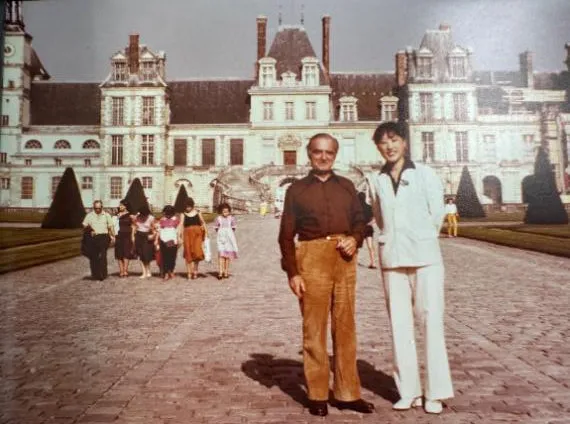
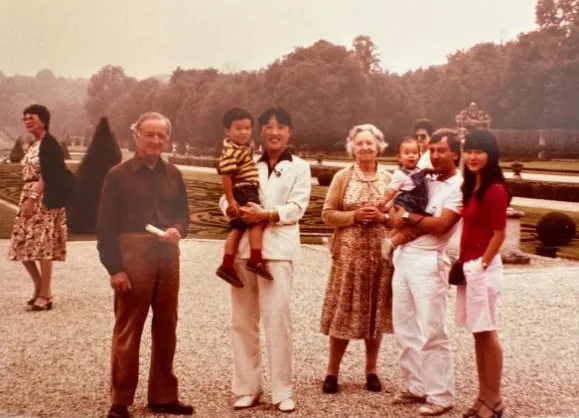
The professor and his wife had eight sons, and his country house was so large that each son had his own room and a swimming pool. That was the first time I experienced the warmth of home in a foreign country! It helped me banish the pain of homesickness. It also made me realize that I could get secondary happiness by helping others!
Professor Houdart did me a great favor by finding me a small unit for residents in another hospital near the Lalibewasser Hospital (also part of the medical school): a room with a kitchen and a bathroom. This time it was permanent, and Prof. Houdart told me again and again that I would never have to move again. I was especially grateful to him for finally having a stable place to live!
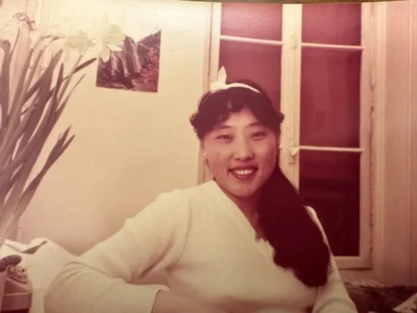
In October 1982, I went to Lyon to attend the World Congress of Microsurgery. There I met the Provost of the Microsurgery School of the Curie Medical School of the University of Paris VI, who warmly invited me to study microsurgical techniques at his school. This was an international school with a 10-month semester and 50 doctors from all over the world enrolled in each semester. The training consisted of theoretical classes, practical classes, and finally a thesis defense. The diploma was the equivalent of a post-doctorate, and no surgeon in France can become a specialist without it. It costed a lot of money to get into this school, but the provost waived it for me. I was especially happy to have this opportunity, even if I had to extend it for 4 months without a scholarship, which I was willing to do!
When I came back to Paris from visiting Prof. Yaşargil's hospital in Switzerland and reported to the school, the provost told me that Prof. Houdart did not approve of me. I was baffled! Why? What was the problem here? I immediately went back to the hospital to see Prof. Houdart. In his office, he said frankly: "Yes, it was I who disagreed. It was already very difficult for you to leave your husband and children to come to France for a year to study. How can you learn microsurgical techniques for another four months?"
That's when I felt that Prof. Houdart really had the feeling of a loving father! He was always thinking about me and my family. I was very touched. But I still told him that it was not easy for us to go abroad once, and that the Chinese people were very capable of suffering and could endure the pain of leaving their families and children behind. As long as we can learn something, we can suffer as much as we want. He looked at me with surprise and said, "Really? Then I really don't understand you guys. Well, since you are willing to suffer this, then I agree." He called the provost on the spot to say that he agreed, and also called the Foreign Students Organization of the Ministry of Foreign Affairs to apply for a 4-month deferred scholarship for me. This was something I did not expect at all! This kind old man was always looking out for me, even when he was kind enough to "go against" my wishes, but it was all for my own good! I don't know how to thank him!
Studying in Paris for more than a year was both intense and enjoyable. I learned a lot every day, traveling from the south to the north of the city, studying at the interventional neuroradiology and microsurgery schools. Although I was tired, I enjoyed it: every day was like a fully charged sports car, running back and forth. At night, I studied French, read books, wrote articles, and didn't go to bed until 2-3 o'clock every day. One year and four months later, I successfully passed the Assistant Etranger exam and the Microsurgery exam at the Curie School of Medicine, Paris VI, with a perfect score of 40/40, and happily returned to my home country to be with my family!
Before my departure, I made dumplings all night and brought 4 carts of dumplings to the department for a farewell banquet, inviting all the colleagues to taste Chinese food. I especially invited Prof. Houdart to eat dumplings, which was the only way I could thank him in France. At the same time, I asked him a question that had been buried in my mind: why did he invite me to Paris to study interventional neuroradiology? He smiled mysteriously and said, "Why wouldn't I invite a student who got 40/40 on my exams?"
Alas! Still no answer! This answer he has taken to heaven.
Prof. Houdart retired home soon afterward, and when his wife died, he was put in a nursing home. I had no more contacts and could not visit him, but the thought lingered in my heart. His nephew, Emenuel Houdart, succeeded Prof. Mehran as head of the neuroradiology department at the hospital in Lalibewasser. I was only able to ask Prof. Houdart Jr. about his uncle during meetings until I learned of his death. Prof. Houdart was the mountain I looked up to and the guide for my career. Although he was out of my reach, I never lost the respect and thoughts in my heart. I have always wanted to fulfill the dream is to visit his grave, from the Chinese point of view, to do a filial piety.
I did not see Prof. Houdart Jr. this time, although I made a special trip to Lalibuwasel Hospital to revisit the same place, but also did not see Prof. Houdart. I only got an e-mail address from him. Fortunately, he quickly replied to me, telling me the address of Prof. Houdart's grave in Thomery Cemetery in Fontainebleau, his hometown, but without the headstone number and location, saying that the grave is very small and easy to find.
On January 21 we drove ourselves to Fontainebleau to look for the Thomery cemetery. It was easy to find by navigation, but the site was not "a small cemetery" as Houdart Jr. said. The large cemetery is situated on a hillside, with 19 floors up and down, built along the slope, with thousands of graves, and Houdart Jr. didn't give us any markers and areas, so how could we find it?
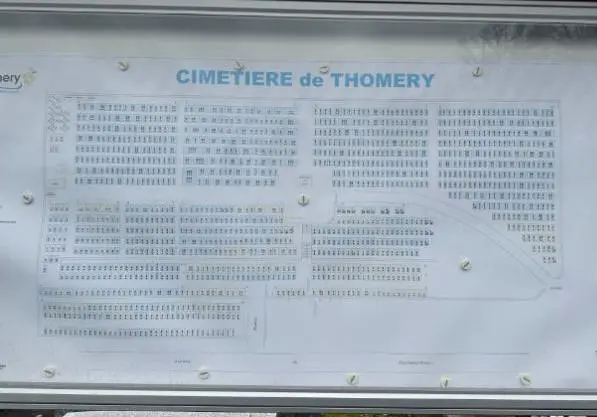
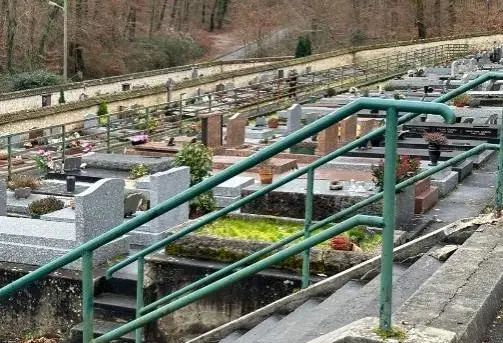
My husband and our French friend Weidong said that we had come a long way to find this place, even if we had to follow one by one, we can still find it! My leg was injured and I couldn't walk, and all the names were foreign, so it seemed very difficult. My husband and Weidong went out of their way to follow the graves line by line, one by one.
It was drizzling and the temperature was getting lower and lower, and the cold wind couldn't help but chill on their faces. They searched back and forth twice, but found nothing. I began to wonder if they were looking in the wrong place. Houdart Jr. neither led us nor told the mark, was it wrong? I have been drumming in my heart, thinking that we should find a place in the highest part of this cemetery, put flowers, recite Prof. Houdart's name in my heart, and bow a few more times, even if it is a worship.
Just as I was about to do so, the cemetery came an old French woman, she drove a car parked outside the cemetery, took out some flowers and toys from the car and walked into the cemetery. Weidong went up to her and talked to her and learned that the old lady's grandson had died young for 20 years, and that the old woman came to the cemetery every day to look at and talk to her grandson, and that this had become an inevitable part of her daily activities, and she had never missed it in the past 20 years. If she didn't come for a day, she would feel empty inside. When she found out that we were looking for the grave of Prof. Houdart, she immediately helped us to find the grave of the "Famille Houdart"! It's a marble and mosaic cemetery with no markings or flowers on the surface, and the name is engraved on the side of the monument, so it's no wonder that Weidong looked back and forth in this place twice and couldn't find it!
We were so happy! Immediately offered flowers and bowed deeply three times to Prof. Houdart. I said to Prof. Houdart in my heart: Prof. Houdart, I am here to see you! On behalf of all the interventional neuroradiologists in China, I am here to see you! You trained the first Chinese interventional neuroradiologist, and now you have promoted and trained thousands of doctors in China, and thousands of Chinese patients benefit from this technology every year. Although they don't know you, they know that you were the first one to invite me to France to learn this technique, and that you encouraged me to learn both interventional and microsurgical techniques to become the first neurosurgeon with bi-disciplinary skills. Nowadays, amphibious doctors are widely trained in China, which is especially beneficial to patients. Your contribution to the Chinese people will always be remembered! I am sure you will smile at the world and feel comforted in heaven!
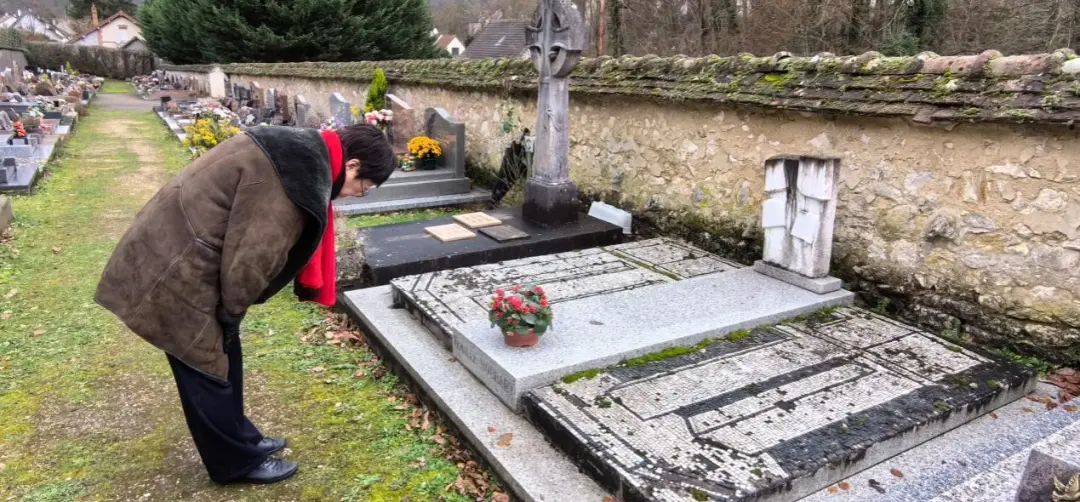
The sky cleared up immediately after paying my respects to Prof. Houdart with flowers! I was in a very relaxed and happy mood, and I had finally accomplished all the tasks that had been placed on my heart!
Prof. Piere Lasjaunias
Prof. Piere Lasjaunias is one of the most knowledgeable and cerebral scholars in the world of interventional neuroradiology, one of the most capable of combining basic knowledge with clinical cases, and an exceptionally reflective, hands-on, minds-on thinker. His Surgical Neuroangiography, a set of four books, reprinted once more in a few years and reduced to three, has become a classic of today's deep understanding of interventional neuroradiology.
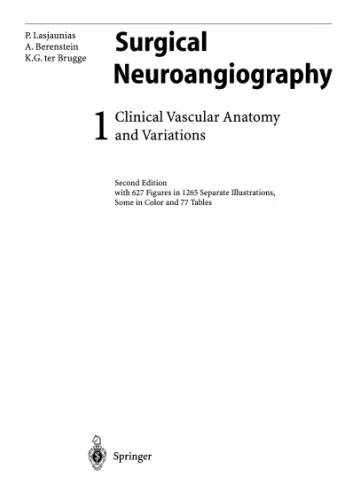
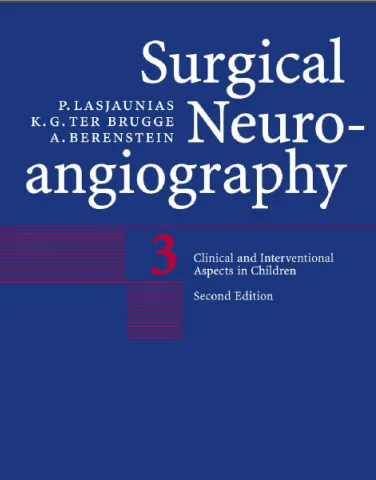
He worked at the Bicêtre Hospital, affiliated with the University of Paris XIII, first in the Anatomy and Embryology Department, and then in the Neuroradiology Department of the hospital, where he specialized in the interventional treatment of congenital hemangiomas or vascular malformations in children. He is the founding editor-in-chief of the Journal of Interventional Neuroradiology and one of the 18 founders of the WFITN.
Although I have not studied in Prof. Lajonias' hospital, I attended the first ABC (Anatomy, Biology, Clinic Anatomy, Biology, Clinic) class he organized and was deeply shocked! For the first time, I knew that to be a good interventional neuroradiologist, I had to know not only how, but also why. One must study, study, study again and again in order to be a good doctor. I had invited him to come to China to lecture and hold a seminar in Xi'an.
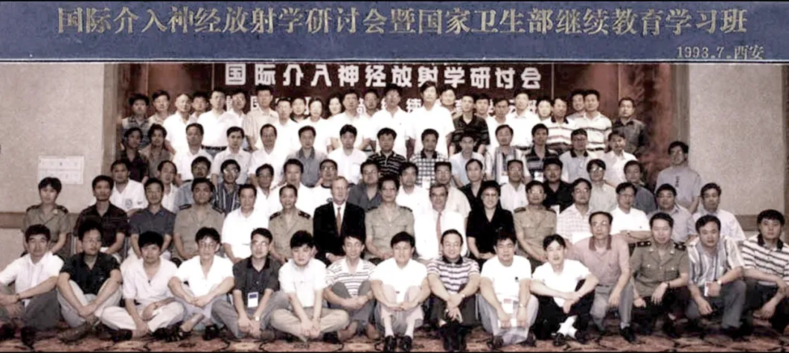
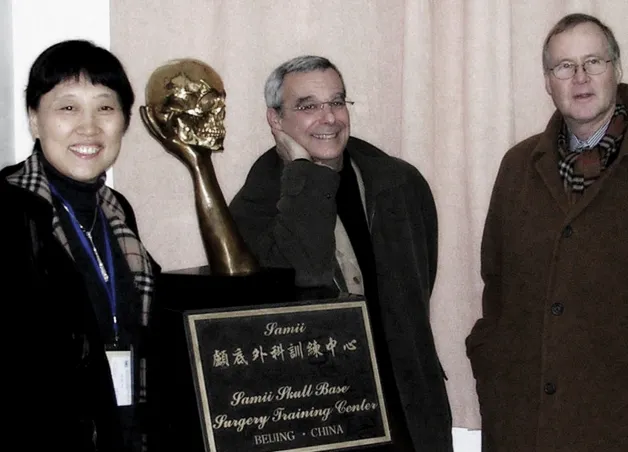
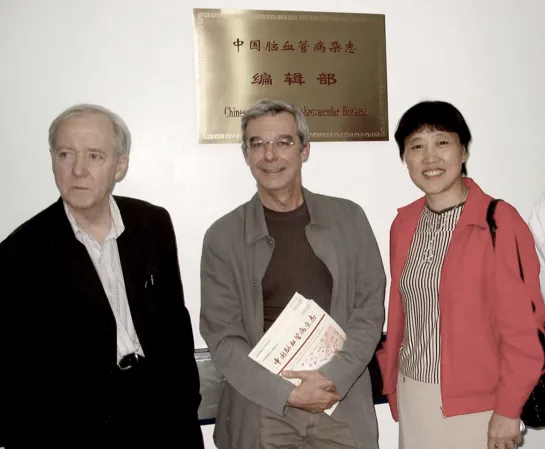
I invited him to visit our journals and laboratories, affectionately called him "Lao La", and brought the PLANET postgraduate program, which he founded to China. My respect and admiration for him was heartfelt, and I took him as a role model for me to study and strive for.
On September 9, 2007, the 9th World Congress of Interventional Neuroradiology (WFITN) was held in China. As the president of WFITN, Mr. Lao-La actively supported me as the president of the congress and participated in it enthusiastically. It made the whole congress a complete success.
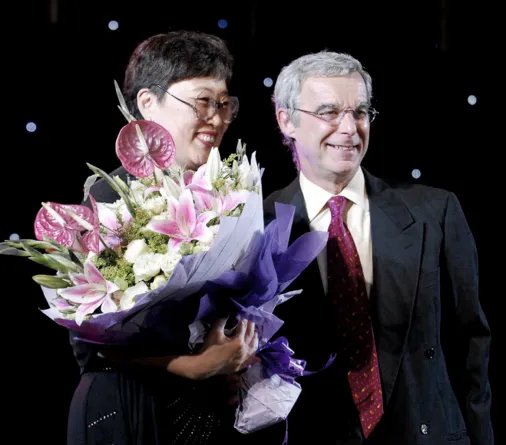
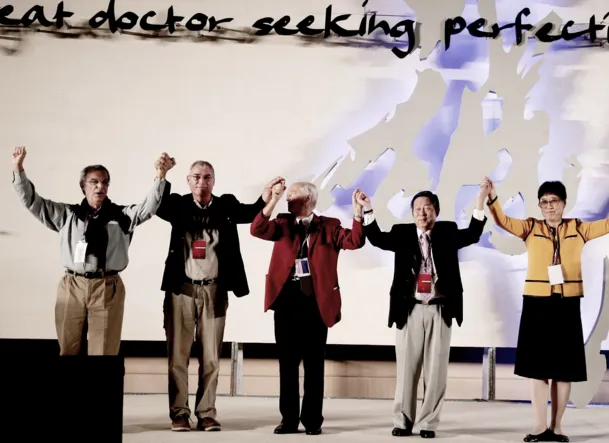
On July 1, 2008, he was invited to lecture at the University of Zurich, Switzerland, and felt chest tightness as soon as he got off the plane. Prof. Valavanis wanted to send him to the hospital, and he said he would go to the hotel first. Unexpectedly, he got off the bus at the hotel to take his luggage, and fell to the ground without going up three steps. A great heart stopped beating! It was one week before his 60th birthday! On behalf of Chinese interventional neuroradiologists, I traveled to France to attend the funeral of Dr. La, and presented a PowerPoint presentation that I had carefully prepared.
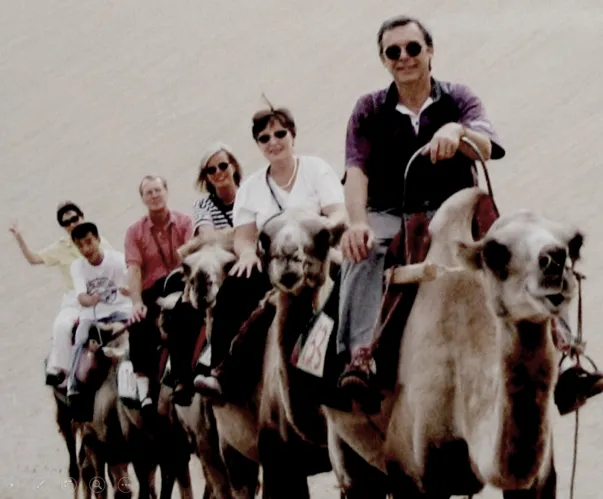
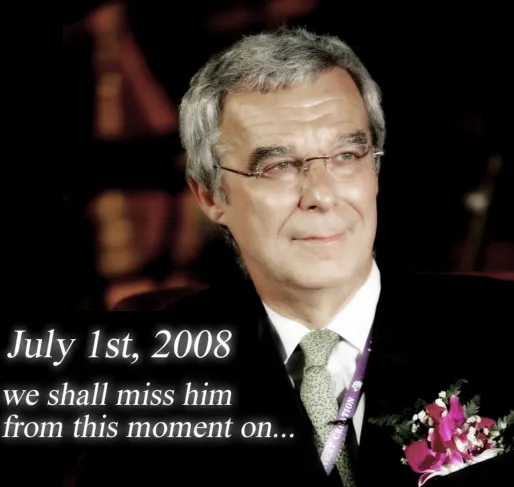
He was such a lover of life, never tired, always enterprising, always exploring! I called his wife, Mrs. Pascalle, and told her that I wanted to pay my respects to Pierre, and Pascalle told me that he had left no ashes after his death, but had scattered them in his garden. I wasn't surprised to hear that I believe this was Srila Prabhupada, a pure materialist. All his life he believed is only in science! Although I was not able to pay my condolences in the garden of his house, in my heart, Lao-la has always been a wise man, an educator and a trusted old friend, who will always live on in our hearts and in our daily work!
As Chinese, it is our basic virtue to "repay the kindness of a drop of water with a spring of water". Whenever we have the chance, we will go to pay our condolences to these French professors who have been friendly and helpful to the Chinese people. We would like to express our condolences and respect to these French professors!
Any use of this site constitutes your agreement to the Terms and Conditions and Privacy Policy linked below.
A single copy of these materials may be reprinted for noncommercial personal use only. "China-INI," "chinaini.org" are trademarks of China International Neuroscience Institute.
© 2008-2021 China International Neuroscience Institute (China-INI). All rights reserved.